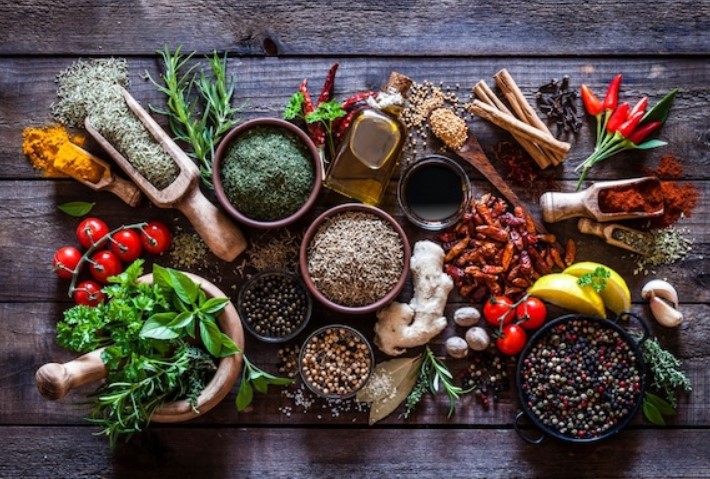HOME REMEDIES
- Posted on November 19, 2022
- News
- By Akta Yadav
- 392 Views

I am sure that you definitely might have used a home remedy at some point of time in your day-to-day life. Herbal teas for colds, essential oils for headache relief, or plant-based supplements for better sleep. Perhaps your grandmother mentioned it or you read about it online. The important thing is that you tried it, and maybe you're wondering if you should try it again.

After the use of these home remedies does the body experience a change or is it more of a placebo effect? Fortunately, scientists have been posing the same questions in the laboratories recently and are discovering that some of our plant-based remedies aren't just urban legends.
We, therefore, have your back if you're a skeptic who requires more than a placebo to feel better. So lets read on to know which home remedies are supported by science also.
Turmeric for pain and inflammation -
Who by this point hasn't heard of turmeric? Turmeric has been used primarily in South Asia as a component of Ayurvedic medicine for more than 4,000 years. When it comes to established medical benefits for relieving pain, particularly pain brought on by inflammation, the golden spice may be the most beneficial.
Curcumin, according to several studies, is what gives turmeric its "wow" quality. In one study, people with arthritis pain who took 500 mg of curcumin instead of 50 mg of the anti-inflammatory drug diclofenac sodium said they felt less pain.
Additional Research
Also supporting this claim of pain alleviation is the fact that ibuprofen and turmeric extract were equally effective in treating knee osteoarthritis patients.
For quick relief, avoid crushing turmeric, which is very stain-prone. Since turmeric only contains 3% curcumin, it is preferable to take curcumin supplements for treatment.

But it doesn't mean a calming turmeric latte won't be beneficial. Two to five grams (g) of the spice may still have some advantages, according to some reports. Make sure to include black pepper if you want to increase absorption.
Take one cup per day.
When using turmeric, think long-term. After four to eight weeks, consuming 1/2 to 1 1/2 tsp of turmeric daily should begin to show results.
Ginger for pain and nausea-
It is almost mandatory that you try ginger if you have a cold, sore throat, morning sickness, or nausea. Making a cup is pretty easy. For a stronger effect, grate it into your tea. However, ginger also possesses anti-inflammatory qualities, which are a less well-known benefit.
The next time you have a headache and some minor nausea, try ginger. Ginger works differently from other anti-inflammatory medications in terms of how it works. By working with an antioxidant and the acidity of the fluid between the joints, it decreases inflammation already existing and prevents the creation of certain inflammatory chemicals. It has anti-inflammatory properties without the risks related to nonsteroidal anti-inflammatory medications. Reliable Source
Recipe for ginger tea
1. Grate raw ginger measuring half an inch.
2. Pour 2 cups of boiling water over the ginger.
3. Observe for five to ten minutes.
4. Lemon juice should be added, and honey or agave nectar should be tasted.
Chili peppers for pain and soreness-
Chili pepper active ingredient has a long history of use in folk medicine and is gradually gaining popularity outside of homeopathy Capsaicin is now a well-liked topical painkiller component. It functions by making a portion of the skin warm before it eventually becomes numb.
Qutenza, a prescription-only capsaicin patch, requires an extremely high concentration of the compound (8 percent trusted Source) in order to function.
So, do you have some hot peppers or cayenne pepper on hand for when you have sore muscles or generalized body pain that won't go away? Create some cream with cayenne.
Capsaicin cream made from coconut oil
1 cup of coconut and 3 tbsp. the cayenne powder should be combined.
1. Oil is heated to a low simmer and allowed to melt.
1. For five minutes, thoroughly stir the mixture.
2. Pour into a bowl after taking the pan off the heat. Let it solidify.
3. When the skin has cooled, massage it.
Use a hand mixer to whip your coconut oil into a light, fluffy consistency for an extra-fancy feel.
Before using the substance too frequently, it's crucial to test your reaction to it. Jalapeno peppers can also be used, but the heat level will vary from pepper to pepper. Never apply this cream near the face or eyes, and use gloves when doing so.
Make sure to use home remedies correctly-
Although the majority of these natural remedies don't have any noticeable side effects, excessive use of them could be harmful.
You should consult a doctor before regularly eating these foods if you're taking any medications or have a condition that is affected by your diet because some people may also be more sensitive to dosage amounts. Conversely, consult a doctor right away if you experience an allergic reaction or your symptoms worsen after using any home remedy.
Remember that home cures might not always be suitable for you and safe. Even while these have scientific support, not all populations or body types are covered by a single study or therapeutic trial. What research cites as helpful might not always be effective for you.
Many of the remedies we mentioned above are ones we are familiar with because our families have used them on us since we were young and have passed them down to us. We look forward to using them when we need comfort.




